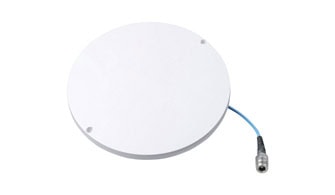In the fast-paced world of wireless tech, low PIM (Passive Intermodulation) antennas are key to optimal performance. Essential for clear communication, these antennas combat signal degradation effectively. What makes them so vital?
A Low PIM Antenna is a device that is designed to minimize Passive Intermodulation Distortion, a common source of interference in cellular network systems. By ensuring cleaner, stronger signal transmission, these antennas enhance network performance, resulting in better call quality, faster data speeds, and improved overall user experience.
As we delve deeper into the nuances of low PIM technology, it becomes apparent how this feature is not just beneficial but indispensable for modern communication systems.
What does PIM mean on an antenna?
PIM stands for Passive Intermodulation. It refers to the creation of unwanted signals or interference caused by non-linearities in the materials and components of an antenna or the surrounding environment. These non-linearities can generate intermodulation products, which are unwanted signals that can interfere with the desired signals being transmitted or received by the antenna.
What is the PIM rating of an antenna?
Passive intermodulation distortion (PIM) is a type of interference that occurs when two or more signals mix together within a passive device, such as an antenna. This mixing creates additional unwanted signals at different frequencies, which can cause interference and degrade the performance of the antenna system.
The PIM rating of an antenna is a measure of how much passive intermodulation distortion it generates. It is typically expressed in decibels relative to the carrier (dBc). A lower PIM rating indicates better performance, as it means the antenna generates less interference.
Industry standards and requirements for PIM ratings vary depending on the application and the specific antenna system. In general, higher-performance systems and applications demand lower PIM ratings to ensure minimal interference and optimal performance.
Antennas with high PIM ratings can cause problems in wireless communication systems, particularly in high-capacity networks like 4G and 5G. PIM can result from various factors, including loose connections, corrosion, poor grounding, and non-linear behavior of materials. Therefore, selecting an antenna with a low PIM rating is important to maintain the quality and reliability of wireless communication systems.
What is a PIM rated antenna?
Passive intermodulation (PIM) is a phenomenon that occurs when two or more signals interact with each other within a passive device, such as an antenna, causing unwanted interference and distortion. PIM can degrade the performance of wireless communication systems, especially in high-power and high-frequency applications.

To address this issue, PIM rated antennas are designed and manufactured to minimize PIM and ensure reliable and high-quality wireless communication. These antennas undergo rigorous testing and certification processes to meet specific PIM standards set by industry organizations, such as the International Electrotechnical Commission (IEC).
PIM rated antennas are commonly used in cellular networks, distributed antenna systems (DAS), and other wireless communication systems where PIM can significantly impact signal quality and system performance. By using PIM rated antennas, operators can reduce the risk of PIM-related issues and maintain optimal network performance.
What is considered low PIM?
PIM stands for passive intermodulation, which is a form of interference that can occur in wireless communication systems. When two or more signals pass through a passive device, such as an antenna or a connector, they can interact with each other and create additional unwanted signals at different frequencies. These unwanted signals can cause interference and degrade the performance of the wireless network.
To minimize the impact of PIM, antennas with low PIM characteristics are used. The PIM rating of an antenna indicates the level of unwanted signals it generates. A lower PIM rating means that the antenna produces fewer unwanted signals and is therefore considered to have better performance.

The specific threshold for what is considered low PIM can vary depending on the application and the industry. However, a common standard is a PIM rating of -150 dBc or lower. The “dBc” refers to decibels relative to the carrier, which is a unit used to express the power level of the unwanted signals compared to the power level of the desired signal. A PIM rating of -150 dBc or lower ensures that the unwanted signals are significantly weaker than the desired signal, minimizing their impact on the wireless network.
What does PIM mean in RF?
In RF (Radio Frequency), PIM stands for Passive Intermodulation. Passive Intermodulation refers to the interference caused by non-linearities in passive components such as connectors, cables, and antennas in a wireless communication system. PIM can degrade the performance of the system by generating unwanted signals at frequencies different from the desired ones, resulting in reduced signal quality and capacity.
What is the cause of PIM?
PIM (Passive Intermodulation) is primarily caused by non-linearities in the components and connections of the network. These non-linearities can occur when two or more signals combine and create unwanted intermodulation products. The main causes of PIM in cellular networks include:
1. Loose or corroded connectors: Poorly tightened or corroded connectors can create small gaps or resistance points, causing non-linearities and generating PIM.
2. Imperfect cable terminations: Improperly terminated cables can cause reflections and create non-linearities, resulting in PIM.
3. Multi-band antennas: Multi-band antennas that cover multiple frequency bands can experience PIM due to the interaction between the different frequency signals.
4. High-power signals: High-power signals can cause non-linearities in the system, especially when they pass through components such as amplifiers, filters, or cables.
5. Multi-carrier signals: In multi-carrier systems, where multiple signals are transmitted simultaneously, the interaction between these signals can cause intermodulation products and generate PIM.
6. Poorly designed or manufactured components: Low-quality or poorly designed components may have inherent non-linearities that lead to PIM.
7. Environmental factors: Changes in temperature, humidity, or other environmental conditions can affect the materials used in the network components, leading to PIM.
PIM can degrade the performance of cellular networks by creating interference and reducing signal quality, resulting in dropped calls, reduced data speeds, and poor network coverage.
What is the difference between PIM and VSWR?
PIM (Passive Intermodulation) is a phenomenon that occurs when two or more signals mix together in a non-linear device, such as a corroded connector or a loose connection. This mixing generates additional frequencies, known as intermodulation products, that can interfere with the desired signals and cause degradation in signal quality. PIM is typically measured in decibels relative to the carrier (dBc) and is a measure of the unwanted signal frequencies generated.
On the other hand, VSWR (Voltage Standing Wave Ratio) is a measure of the efficiency of power transmission between the antenna and the feedline. It is caused by the mismatch between the impedance of the antenna and the impedance of the transmission line. A high VSWR indicates a poor match and results in a portion of the power being reflected back towards the source instead of being transmitted to the antenna. VSWR is typically expressed as a ratio, such as 1:1 (perfect match) or 2:1 (50% of the power is reflected).
In summary, PIM deals with the generation of unwanted signal frequencies, while VSWR measures the efficiency of power transmission between the antenna and the feedline. Both are critical for antenna performance but address different aspects of signal quality.
What is a low PIM connector?
PIM, or passive intermodulation, is a form of distortion that can occur when two or more signals are combined in a non-linear device. In the case of connectors, PIM can occur when there is a poor connection or a loose connection between the connector and the cable or device it is attached to.
A low PIM connector is an interface that is designed to minimize this distortion by providing a high-quality, secure connection. These connectors are typically made with high-quality materials and precise manufacturing techniques to ensure a tight and reliable connection. They are also often designed with features such as low-loss dielectrics and low-resistance conductors to further reduce PIM.
Low PIM connectors are commonly used in applications where signal integrity is critical, such as in wireless communication systems, distributed antenna systems (DAS), and in-building wireless networks. By minimizing PIM, these connectors help to maintain the quality and reliability of the signals being transmitted and received.
In summary, Low PIM technology is becoming increasingly important in the field of wireless communication. By reducing passive intermodulation, low PIM antennas and connectors improve the performance of communication systems such as cellular networks and satellite transmissions. As we move forward, the need for low PIM solutions highlights the fact that in technology, clarity and reliability are not just desirable, but necessary.
For professionals in various roles, from product managers to engineers, it is crucial to understand the implications of PIM and how to control it. Whether you are designing a new system or optimizing an existing one, incorporating low PIM components can have a significant impact on achieving the best possible performance. As the demand for uninterrupted communication continues to increase, the importance of low PIM technology will also rise, making it a critical consideration for anyone involved in the technology industry.


